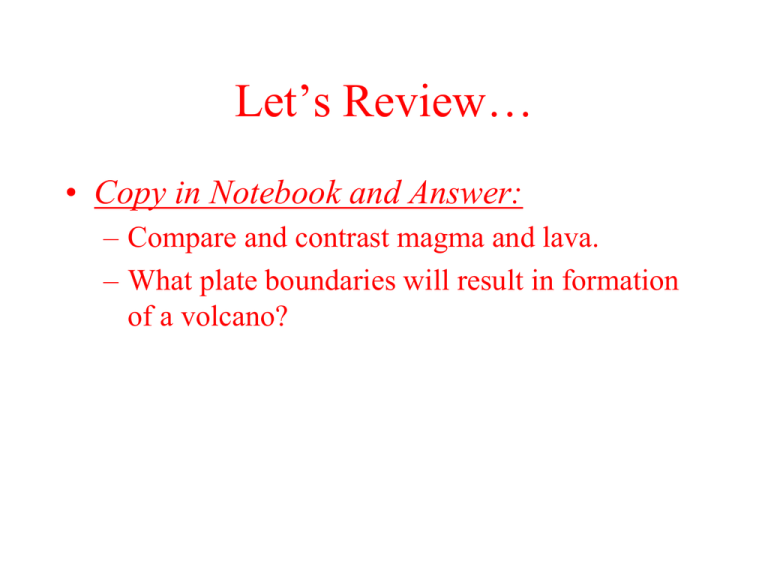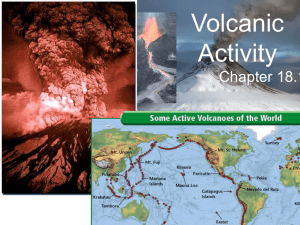Types of Magma - Teacher Notes
advertisement

Let’s Review… • Copy in Notebook and Answer: – Compare and contrast magma and lava. – What plate boundaries will result in formation of a volcano? Magma What caused Mt. St. Helen’s to erupt? How does Magma form? • Magma is molten rock beneath the Earth’s surface • High Temperature: – Rocks melt at 800-1200°C Viscosity • Viscosity – internal resistance to flow • Low Viscosity – Moves fast (Less thick) • High Viscosity – Moves slow (More thick) Types of Magma Type of Magma Viscosity Silica Content Gas Content Explosiveness Type of Volcano Example Type of Magma Basaltic Viscosity Silica Content Low 1-2% Gas Content Explosiveness 50% Least Type of Volcano Shield Example Hawaii Type of Magma Basaltic Viscosity Silica Content Low 1-2% Andesitic Medium 3-4% Gas Content Explosiveness 50% Least 60% Type of Volcano Shield Medium Composite Example Hawaii Mt. St. Helens Type of Magma Basaltic Viscosity Silica Content Low 1-2% Andesitic Medium 3-4% Rhyolitic High 4-6% Gas Content Explosiveness 50% Least Type of Volcano Shield 60% Medium Composite 70% Greatest Cinder Cone Example Hawaii Mt. St. Helens Yellowstone *The higher the gas content, the more explosive the magma is going to be Volcanic Material • Tephra – Rock fragments thrown into the air during a volcanic eruption • Pyroclastic Flow – Rapidly moving volcanic material. – Speeds up to 200km/h – May contain hot, poisonous gases Tephra Pyroclastic Flow Shield Volcano • Broad Gentle Sloping Sides • Non-Explosive Composite Volcano • Alternates Lava and Tephra • Potentially most dangerous Cinder Cone Volcano • Steep sides caused by tephra landing around vent • Explosive











